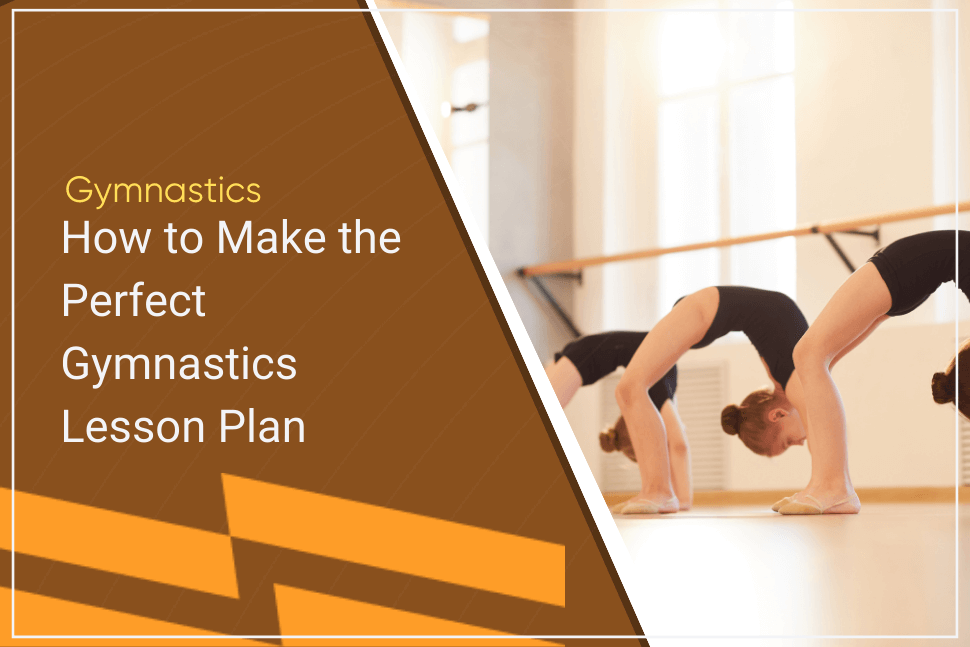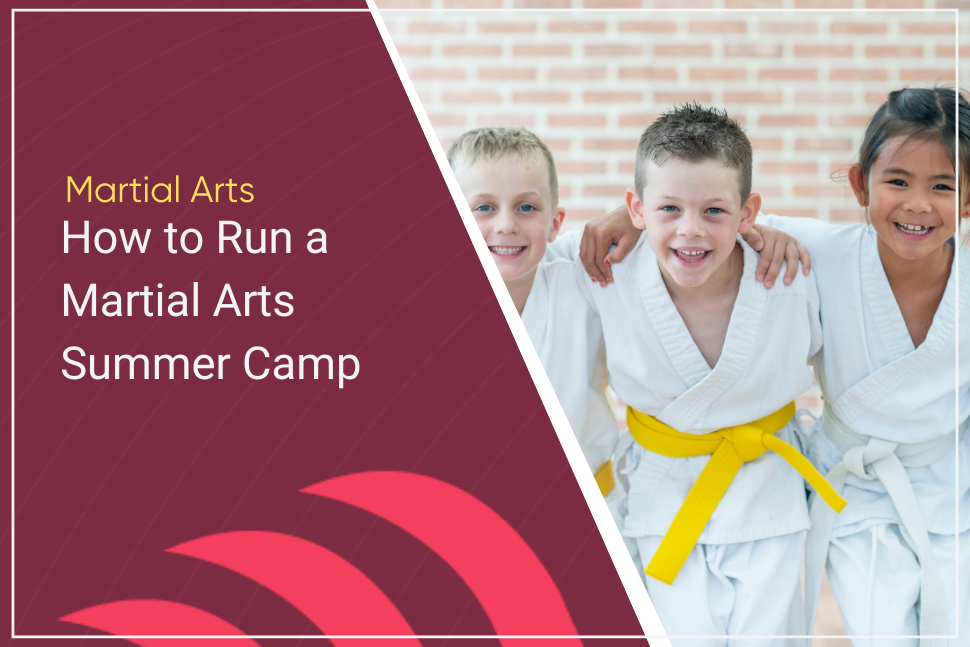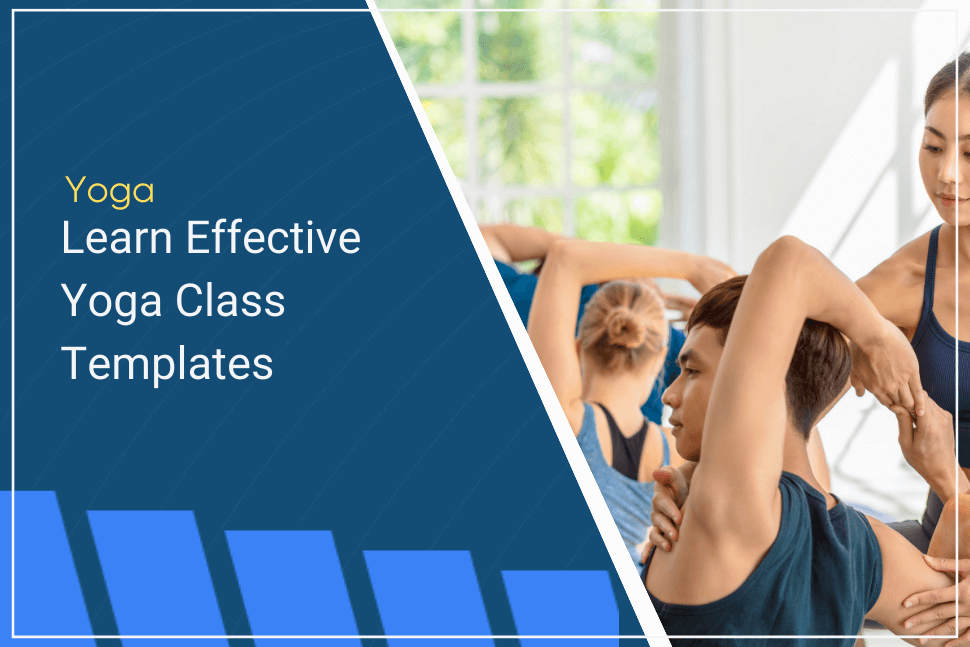Leading a gymnastics lesson without a plan is a big problem.
Not only will your gymnastics school seem unorganized or unprofessional, but it will also leave you standing in front of the class, panicking while each person looks at you with expectation. Think back to a time when you did a presentation at school without doing the proper research and practice. Now, times that feeling by ten, and you have what it feels like to run a lesson without a plan.
For some, planning comes easily, but for others, it is not something they can do naturally. Here, we will show you how to prepare the perfect gymnastic lesson while also providing you with a template that you can use next time you are coaching.
Why is Having a Lesson Plan Important?
But before we dive into how you should prepare a lesson plan for your next gymnastics class, let’s quickly touch on why having one is so important for both you, teaching gymnastics, and your clients.
Track progression
It is no secret that gymnastics is an extremely complex and skill-focused sport. However, very few athletes start with all the skills under their belt, instead relying on different progressions to help them get to the very top of the sport.
In total, there are ten gymnastic steps to be aware of, and the right lesson plan will allow you to track your member’s progression through training cycles, helping them improve their skills and develop into better gymnasts.
Without a plan, it would be easy to forget how members are progressing, which could lead to you asking them to do moves they are not ready to do or asking them to continue to do moves that they mastered many weeks ago.
Prepare for the unexpected
Even the best-planned plans can go off plan (try saying that five times fast!). Even the most organized sessions can go off the rails from time to time, but having a plan that you can revert back to is a great way to minimize the impact of something unexpected and ensure the whole session is not lost.
Show Expertise and Care
Finally, putting time and effort into your lesson plan shows off your skill, knowledge and expertise in the gymnastics space while also showing your members you care about their progression in the sport, making them feel more valued, motivated, and loyal to your gym.
How to Prepare Beginner Gymnastics Lesson Plans
With all that in mind, let’s take a look at how you can prepare the perfect beginner gymnastics lesson plan for your group.
A detailed warm-up
Firstly, you must start any lesson plan with a thorough and high-quality warm-up. Gymnastics requires athletes to stretch their bodies in ways that are not common in everyday life, and therefore, those muscles need to be loosened and activated before the lesson starts.
For beginners, it’s important to provide a highly detailed but also fun warm-up. These gymnasts will likely not know how to do an effective warm-up without detailed guidance, given they are new to the sport, but there must also be an emphasis on making the warm-up fun and engaging to ensure they have a good time and come back for more sessions.
Whereas experienced gymnasts know that a warm-up is a means to an end, preparing them for their session, beginners are still getting to grips with their love for the sport, and enjoyment should always be a priority.
Here are three fun ways to create a great and engaging warm-up:
Animal Walks: Turn your warm-up into a playful animal-themed routine. Have the gymnasts perform various “animal walks” to get their bodies moving and grooving. For example:
Bear Walk: Walk on hands and feet like a bear.
Crab Walk: Sit on the floor, lift your hips, and walk on your hands and feet like a crab.
Frog Jumps: Crouch down and jump forward like a frog.
Balloon Volleyball: Set up a “net” using a rope or a string stretched between two points. Use a balloon as the ball. Have gymnasts form two teams and play balloon volleyball. This activity not only warms up the upper body but also promotes hand-eye coordination, agility, and teamwork.
Obstacle Course: Create a simple obstacle course using cones, hula hoops, and mats. Have gymnasts run, jump, crawl, and balance their way through the course. You can add variations like forward rolls, somersaults, and cartwheels if they are already familiar with these moves. Time them and encourage friendly competition to make it engaging.
You take care of the lessons, and we’ll take care of the business.Gymnastics Software that does the Hard Stuff for You
Plenty of scaling options
Once you have finished your warm-up, it’s time to get to the meat of your session. Remember, gymnasts at the beginner level will likely be able to do some basic moves but will also require some hand-holding for other moves.
As a result, when you are planning your lesson, it’s important to factor this information into your plan, ensuring there are plenty of scaling options available for those who are still learning their craft.
Here are some examples to consider:
Forward Roll Scaling Options
Assisted Roll: Have a spotter provide support by gently guiding the gymnast through the roll.
Kneeling Roll: Begin the roll from a kneeling position instead of standing to reduce the height and impact.
Cartwheel Scaling Options
Handstand Against a Wall: For those not ready for a cartwheel, practice a handstand against a wall to build strength and confidence.
Assisted Cartwheel: Use a spotter to help guide the gymnasts through the cartwheel motion until they are comfortable doing it on their own.
Bridge Scaling Options
Elevated Bridge: Place your hands and feet on an elevated surface (like a folded mat or a low beam) to reduce the range of motion and make it easier.
Assisted Bridge: Have a spotter help support the gymnast’s back to maintain the bridge position if they find it challenging to do it independently.
Time and space for you to assess and advise
Finally, it’s important to leave time and space in your plan for you to support each gymnast individually. Beginners need more support than other gymnasts, so it’s crucial to include time in the plan for you to walk around the class, offering advice and guidance that is specific to each member of the class to help them improve and motivate their training.
Gymnastics Lesson Plan Template
Warm-Up (10 minutes)
- Brief welcome and introduction.
- Fun warm-up activity (animal walks, balloon volleyball, or obstacle course).
- Dynamic stretching to prepare the body for the lesson.
Skill Building (20 minutes)
- Divide the class into smaller groups or stations based on skill level.
- Each group works on basic gymnastics skills based on their experience:
- Group 1 (Beginners): Forward rolls and assisted cartwheels.
- Group 2 (Intermediate): Cartwheels, handstands, and bridge kickovers.
- Group 3 (Advanced): Back handsprings and round-offs.
- Instructors and assistants provide individualized attention and assistance as needed.
Group Activity (10 minutes)
- Bring the class together for a fun group activity, such as a mini gymnastics routine or a game that encourages teamwork and cooperation.
Cool Down and Stretching (5 minutes)
- Lead the class in a cool-down, including stretches for all major muscle groups.
- Emphasize the importance of flexibility and recovery.
Review and Feedback (5 minutes)
Gather the class to review what they’ve learned and discuss any challenges or successes. Provide constructive feedback and encourage questions.
Conclusion: Planning the Perfect Gymnastics Session
Now, you have all the tools you need to plan the perfect gymnastics session and help your members achieve their objectives in the sport while also having fun! For the perfect time management and digital planning platform, be sure to check out the Gymdesk Management Software, which you can try for free for 30 days by following this link.
 Gym Owner Statistics: The State of Gyms, Member Trends, and Usage Data
Gym Owner Statistics: The State of Gyms, Member Trends, and Usage Data



